Bryce Canyon National Park
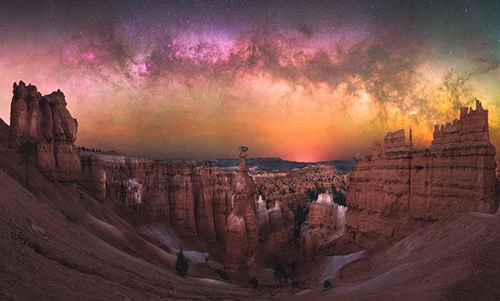
Bryce Canyon National Park Overview
Bryce Canyon National Park, located in Southwestern Utah, is renowned for having the largest collection of hoodoos-the unique rock formations found at Bryce – in the world.
The park features horseshoe-shaped amphitheaters carved from the eastern edge of the Paunsaugunt Plateau, stunning scenic views, and exceptionally dark night skies. Visitors can enjoy activities such as hiking, camping, various ranger-led outdoor programs, and even attend the Prairie Dog Festival.
Due to its vast vertical range of over 2,000 feet, the park encompasses three distinct climatic zones: spruce or fir forest, Ponderosa Pine forest, and Pinyon Pine or juniper forest.
Bryce Canyon started attracting tourists in 1916 through Union Pacific, was designated as a National Monument in 1923, and officially became a National Park in 1928.

Things to do in Bryce Canyon National Park
Bryce Canyon National Park offers a vast array of experiences and activities for visitors, catering to a wide range of interests and skill levels. From casual nature lovers to seasoned adventurers, there is something for everyone in this red rock wonderland.
Summer Hiking and Winter Hiking
One of the most popular activities in Bryce Canyon is hiking, with the park offering a network of trails that showcase stunning geological features and sweeping vistas. During the summer months, visitors can explore the park’s numerous hiking trails, ranging from easy, family-friendly loops to more challenging backcountry excursions.
In the winter, the park transforms into a snow-covered wonderland, offering visitors the opportunity to experience Bryce Canyon in a completely different way. Hiking trails become accessible for snowshoeing and cross-country skiing, providing a unique and serene way to explore the park’s breathtaking landscapes.
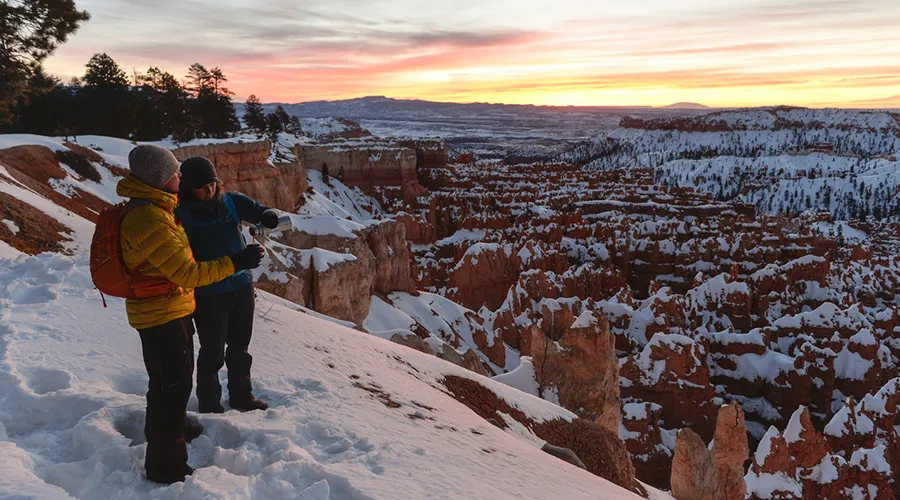
Ride the Shared-Use Path
The most convenient way to bike in the first three miles of the park is by using the Shared-Use Path. This path spans 5 miles (8 km) and is a two-lane route free of vehicles, connecting the shuttle station north of the park with the Visitor Center, Sunrise Point, Sunset Point, and Inspiration Point.
The Shared-Use Path offers a picturesque route for pedestrians, cyclists, rollerbladers, skateboarders, non-motorized scooters, wheelchair users, and cross-country skiers to explore the park and its surroundings. This 18-mile (29 km) path links the hoodoos of Red Canyon on the western edge of the Paunsaugunt Plateau with Inspiration Point in the park, mostly following SR12 and UT63.
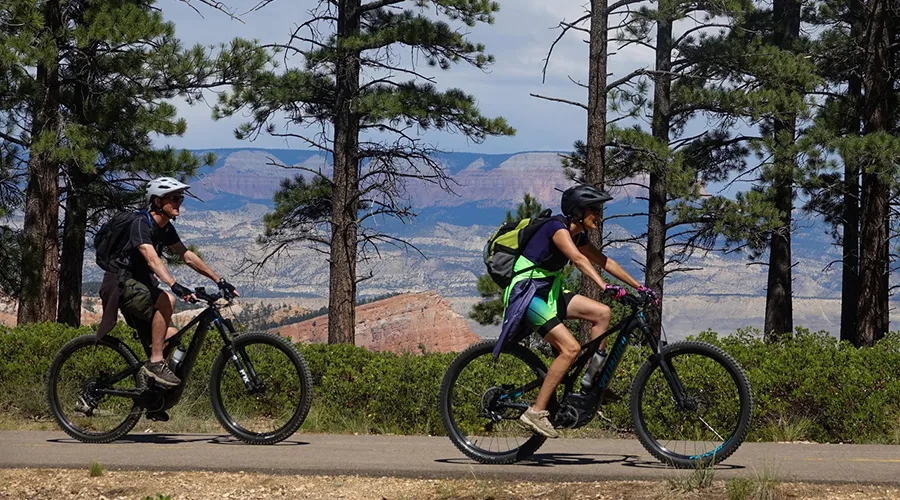
Drive the Southern Scenic Drive
The main park road spans 18 miles (29 km) from the park entrance in the north to Rainbow at Yovimpa Point at the end of the road. The Bryce Amphitheater area is located within the first 3 miles (4.8 km), while the remaining 15 miles (24 km) to the road’s end is known as the Southern Scenic Drive.
This section of the main road features 9 scenic overlooks that showcase a different, less commonly seen beauty of Bryce Canyon. One distinctive feature of the Southern Scenic Drive is that the park’s elevations rise as you travel further south.
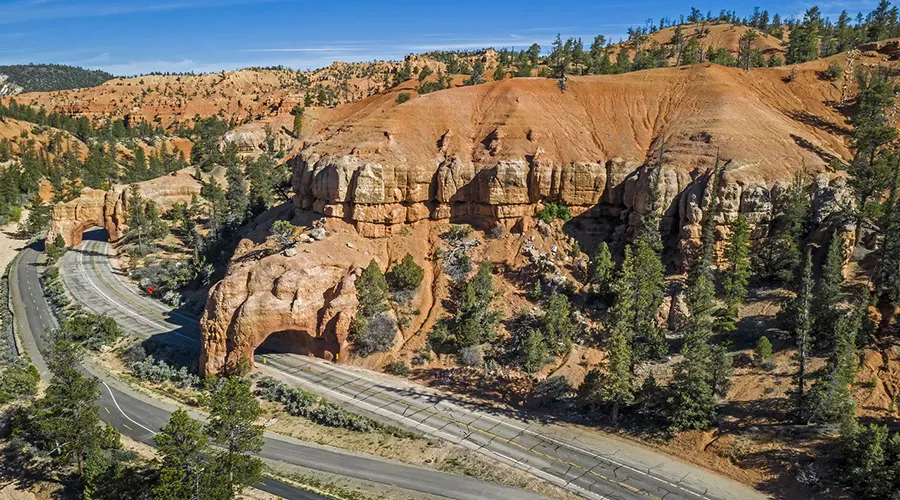
Cross-Country Skiing
Exploring Bryce Canyon in winter on cross-country skis is a fantastic option. While skiing off the rim into the canyon is not allowed, there are plenty of routes above the rim to enjoy. These include parts of the Rim Trail along the Main Amphitheater’s edge, the Bristlecone Loop Trail, the Paria Ski Loop, and the unplowed Paria View and Fairyland Point roads.
Additionally, there are many opportunities for cross-country skiing just outside the park. Bryce Canyon City maintains numerous miles of groomed ski trails as well.

Snowshoeing
Bryce Canyon is said to be even more stunning in winter, with its white snow, red rocks, blue sky, and evergreen trees. At an elevation of 8,000 feet (2,438 m), the landscape transforms during the colder months.
You can enjoy this enchanting season by going on a snowshoe hike. Snowshoeing is permitted on all trails throughout the park. Popular routes include Rim Trail, Bristlecone Loop, Fairyland Road, and Paria Road.
Joining a Ranger Program is another option. These ranger-led snowshoe hikes cater to all skill levels, from beginners to experts. Snowshoes and poles are provided for free to participants, depending on snow depth and staffing availability.
Make sure to wear winter clothing, bring water, and wear waterproof boots. Snowshoes and poles will be supplied, but tennis shoes are not allowed.
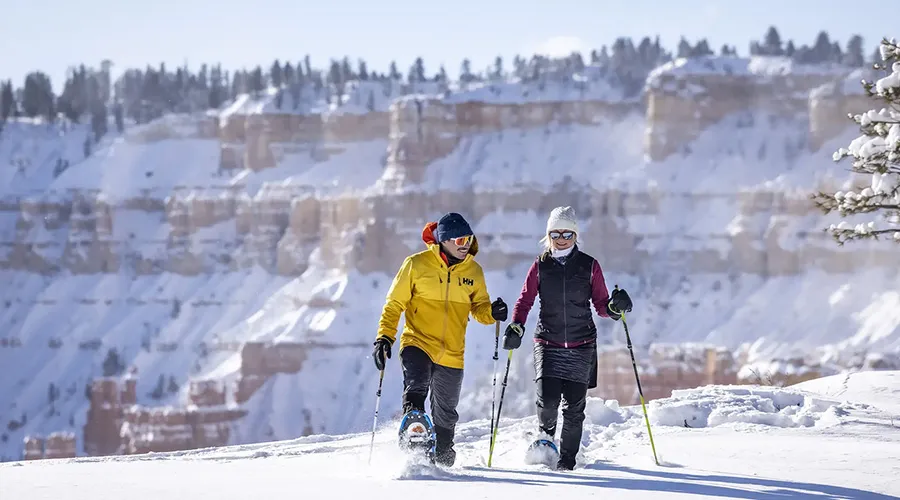
Camping
Bryce Canyon National Park offers several campground options, providing visitors with the opportunity to immerse themselves in the park’s stunning natural beauty. From the Sunset Campground, which offers easy access to the park’s main attractions, to the more remote North Campground, there are plenty of options to choose from.

Ranger Program
Bryce Canyon National Park offers a robust ranger program, with a variety of educational and interpretive activities designed to help visitors gain a deeper understanding and appreciation of the park’s unique natural and cultural heritage. From guided hikes and evening campfire programs to Junior Ranger activities, there is something for every age and interest level.
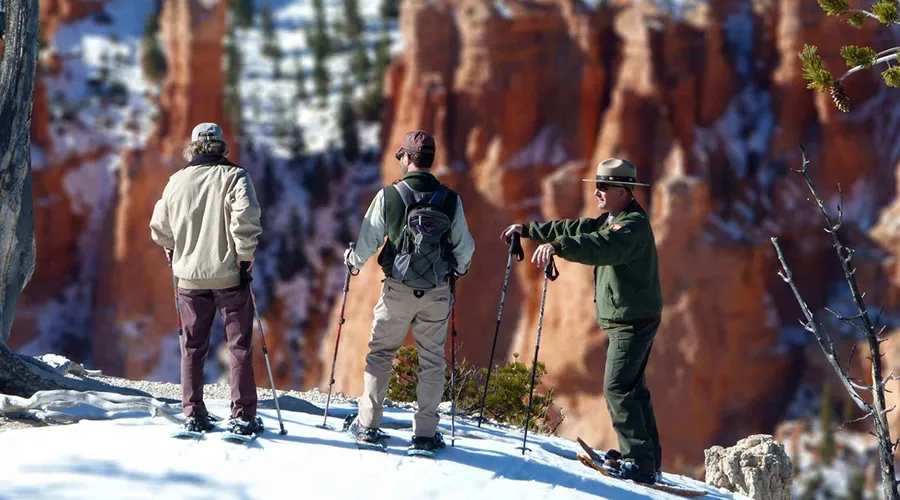
Event Calendar
Throughout the year, Bryce Canyon National Park hosts a variety of special events and programs, offering visitors the opportunity to engage with the park’s natural and cultural features in unique and immersive ways. From annual festivals and night sky events to specialized workshops and guided tours, the park’s event calendar is always filled with exciting opportunities.
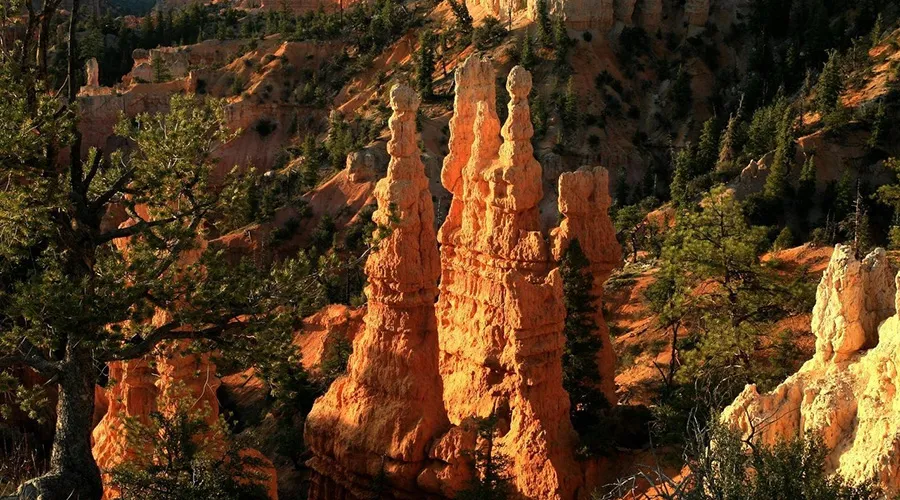
Places to stay in Bryce Canyon National Park
Bryce Canyon National Park offers a range of accommodation options to suit the needs and preferences of every traveler, from rustic campgrounds to luxurious resorts.
Camping
Bryce Canyon National Park has two campgrounds: the North campground is open all year, while Sunset campground closes in winter. Both campgrounds are conveniently located near the Visitor Center, Bryce Canyon Lodge, and the main Bryce Amphitheater.
Campsite availability is based on a first-come, first-served basis, which can be unpredictable. It is advisable to arrive before noon if you can and make securing a campsite your top priority upon arrival.
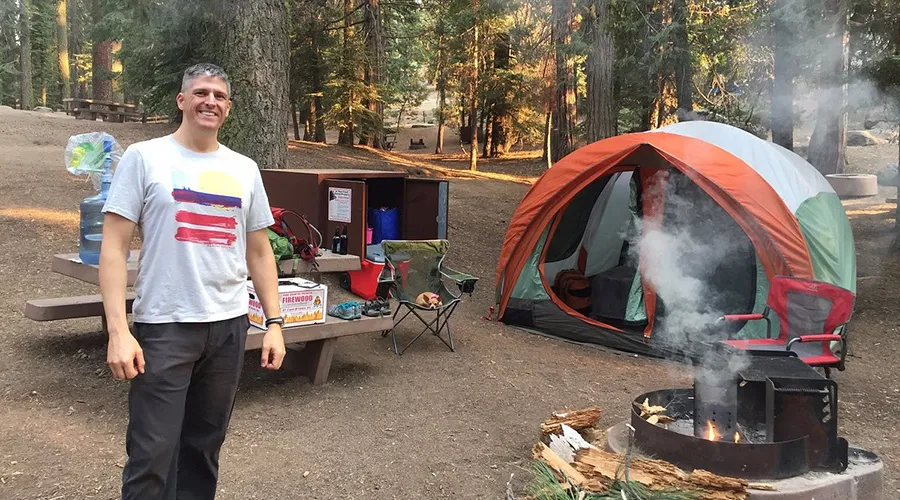
Hotel and Resort
In addition to the park’s campgrounds, Bryce Canyon also offers a variety of hotel and resort accommodations in the surrounding areas, providing visitors with more comfortable and amenity-rich lodging options. From cozy cabins to full-service resorts, these establishments offer a range of amenities and services to enhance the overall Bryce Canyon experience.
Best Western Plus Ruby’s Inn (3.5-star)
Best Western Plus Rubys Inn in Bryce Canyon City, UT offers modern amenities and a stylish design that sets it apart from other hotels. For business travelers, every guest room includes a large work desk and complimentary internet access to help you stay productive even when you’re not in the office. If you’re staying for a longer period, each room is equipped with a handy in-room mini fridge perfect for storing beverages and snacks. Additionally, the hotel features a fitness room on-site, allowing you to maintain your exercise routine while traveling.
- Address: 26 South Main Street, Bryce Canyon City, UT 84764
- Price Range: From $160/night depending on the season and demand

Best Western Plus Bryce Canyon Grand Hotel (3.5-star)
This modern hotel offers spacious rooms, an outdoor pool, and a complimentary breakfast. It’s located just a few minutes from the park entrance.
- Address: 30 N 100 E, Bryce, UT 84764
- Price Range: From $260/night depending on the season and demand
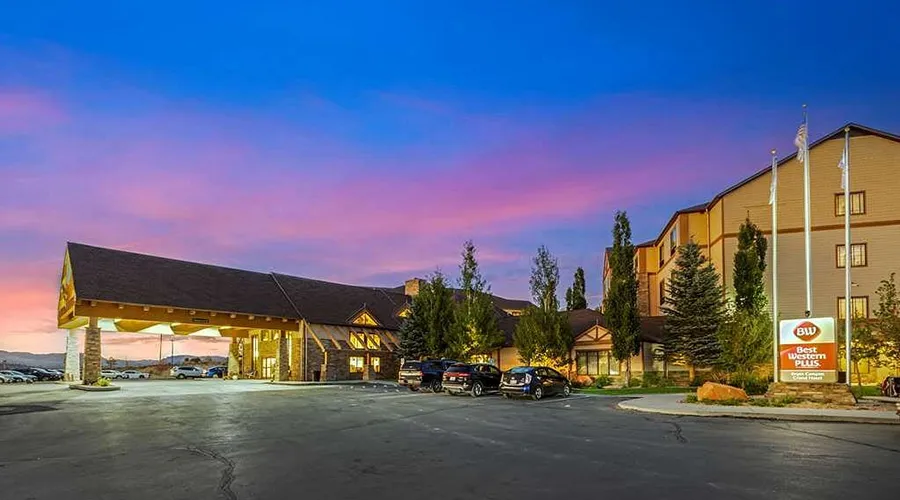
The Lodge at Bryce Canyon (3-star)
Situated in Bryce Canyon National Park, The Lodge at Bryce Canyon is the sole accommodation option within walking distance of the hoodoos in Bryce Amphitheater. The lodge features 40 Western Cabins, 70 motel-style rooms, and 4 rooms within the main Lodge building. Guests can enjoy a top-notch dining experience at the lodge’s restaurant, which is open to the public. For lighter options, Valhalla Pizzeria is available during the peak summer season. Visitors can also browse souvenirs at the lodge’s gift shop and participate in Ranger-led programs at the Auditorium.
- Address: 1 Lodge Way, Highway 63, Bryce Canyon National Park, UT 84764
- Price Range: From $200 – $350/per night depending on the season and demand
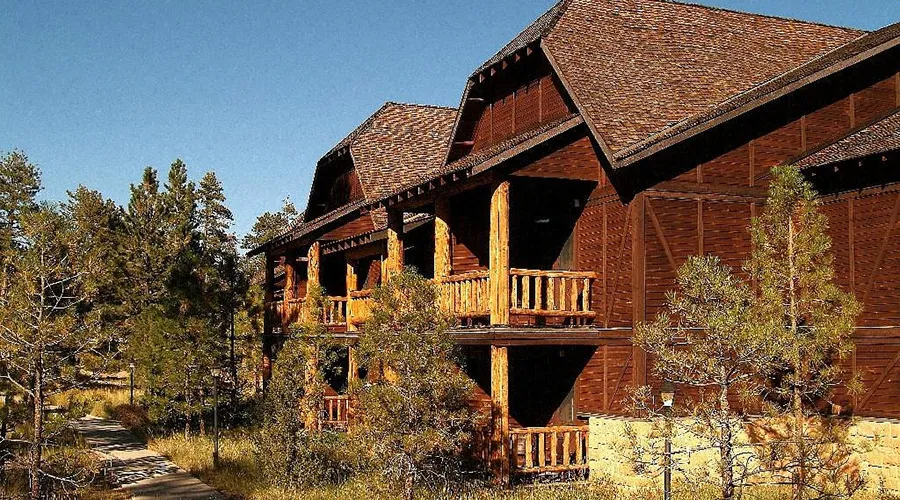
Dining
Bryce Canyon National Park and the surrounding areas offer a variety of dining options, catering to a range of tastes and preferences.
Ruby’s Inn Cowboy’s Buffet and Steak Room
Ruby’s Inn is an ideal location to start your adventure in the stunning Bryce Canyon region. This inn offers a unique family-style western dining experience with top-quality steak, ribs, chicken and seafood options.
- Address: 26 S Main St Best Western Plus Ruby’s Inn, Bryce Canyon National Park, UT 84764-8002
- Open time: 6:30 AM – 9:00 PM
- Prices range: $5 – $20
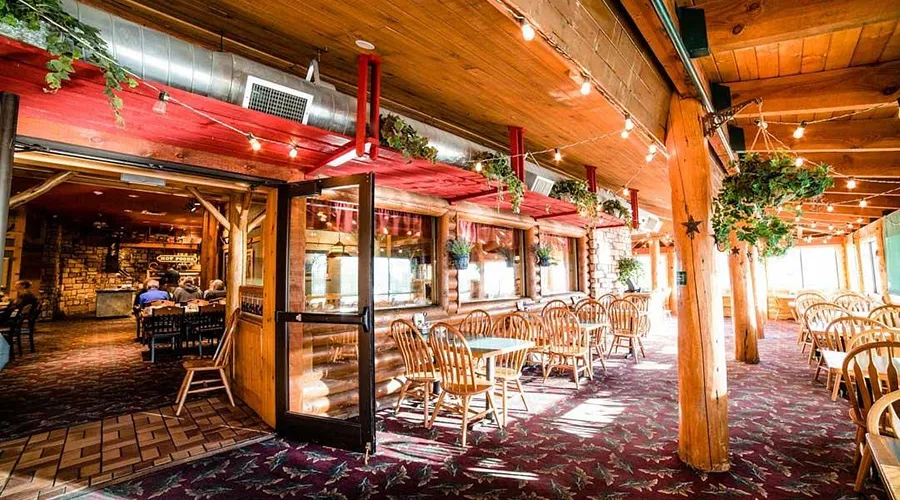
Bryce Canyon Pines Restaurant
The Bryce Canyon Pines Restaurant in Bryce is a popular choice among locals and visitors, offering tasty homemade dishes like soup, pie, large steaks, mashed potatoes, and gravy. Their pies have been honored as some of the finest in the country.
- Address: 2476 West Highway 12, Bryce Canyon National Park, UT 84764
- Open time: 7:00 AM – 9:30 PM
- Prices range: $5 – $30
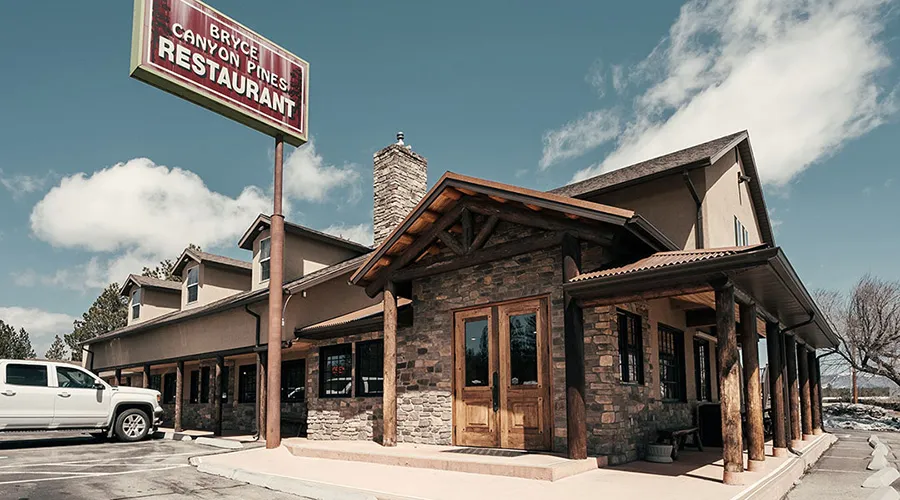
The Pizza Place
Bart and Peggy Palmer founded The Pizza Place in 1990. Their children now use the special recipes that made the restaurant successful to continue making top-quality pizza in southern Utah.
- Address: 21 North Main Street HWY 12, Tropic, UT 84776
- Open time: 11:00 AM – 9:00 PM
- Prices range: $5 – $23

Planning Your Trip to Bryce Canyon National Park
Visiting Time
The best time to visit Bryce Canyon National Park can vary depending on your interests and preferences. The park is open year-round, but the seasonal changes offer unique experiences and opportunities throughout the year.
Summer offers the best weather for hiking and camping, while winter provides opportunities for snow sports. Spring and fall are less crowded and offer mild weather.
Transportation
Bryce Canyon National Park is located in the southwestern corner of Utah, approximately 270 miles (435 km) from Salt Lake City and 200 miles (320 km) from Las Vegas. Visitors can access the park by car, with several major highways and scenic routes leading to the park’s main entrance.
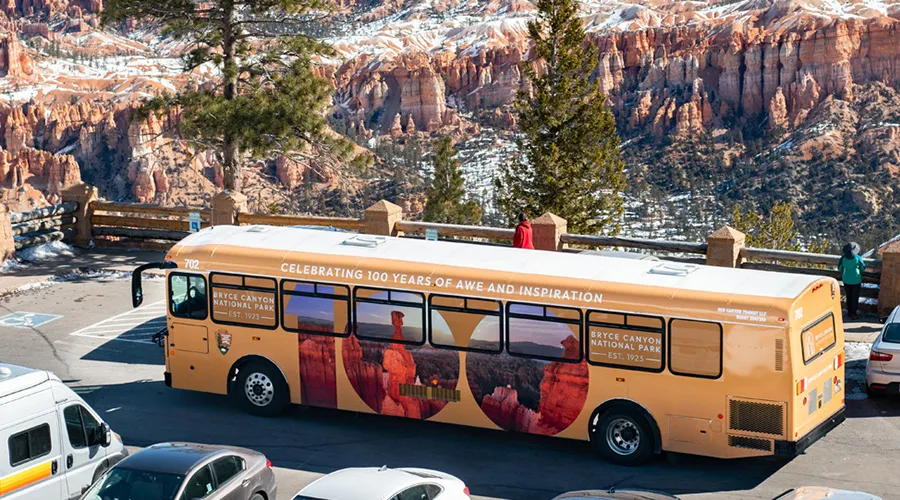
Conclusion
Wind Cave National Park offers a wealth of opportunities for outdoor enthusiasts, nature lovers, and history buffs alike. With careful planning and an adventurous spirit, you can make the most of your trip to this hidden gem in the Black Hills of South Dakota. So pack your bags, hit the road, and get ready to discover the wonders of Wind Cave National Park!
Bryce Canyon National Park Photos
Q&A for Bryce Canyon National Park
Bryce Canyon National Park is unique because it is not a traditional canyon, but rather a vast amphitheater sculpted by the slow, relentless forces of erosion over millions of years. The park’s signature feature, the hoodoos – towering, crimson spires that rise from the earth – create a breathtaking and otherworldly landscape.
Some of the best hiking trails in Bryce Canyon National Park include the Navajo Loop, Queen’s Garden, Fairyland Loop, and the Rim Trail. These trails offer a range of difficulty levels and showcase the park’s stunning geological features.
Absolutely! Bryce Canyon is open year-round, and the winter months offer a unique and serene way to experience the park. Visitors can enjoy activities like snowshoeing, cross-country skiing, and exploring the snow-covered landscapes.
Bryce Canyon National Park offers a variety of accommodation options, including campgrounds, hotels, and resorts in the surrounding areas. The Sunset Campground and North Campground provide campground options within the park, while nearby towns like Tropic and Bryce Canyon City offer a range of hotel and resort choices.
The amount of time you’ll need to visit Bryce Canyon National Park can vary depending on your interests and the activities you want to experience. Many visitors recommend spending at least 2-3 days in the park to fully explore the main sights and trails. However, those looking to delve deeper into the park’s backcountry or participate in specialized activities may want to allocate more time.

